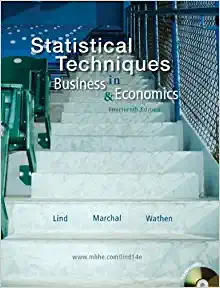

Its macroeconomic questions could you help me solve it
Question One The convolution formula is a useful trick when we are interested in the sum or average of independent random variables. In the last problem set, we dealt with the random variable X, below. f(x) = for r > 0 for r 5 0 Now, suppose that X = X1 = X2 = ... = Xx are independent, identically distributed random variables. 1. Using the convolution formula, determine the PDF of Y2 = }(X, + X2). Hint: Define Z1 = X1 and Z2 = X1 + X2 and then use the transformation method to get back to Y2 from Zz. 2. Compute its expectation: E[Y2]. 3. Using the convolution formula, determine the PDF for Ys = }(X1 + X2 + X3). Hint: Use the hint from part 1 to define Z3 = X1 + X2 + X3 and perform a convolution with X3 and Z2 to transform the problem into Zz and Z3. 4. Compute its expectation: E[Y3]. 5. Using the convolution formula, determine the PDF for Y = }(X1 + X2 + . .. + Xk) = E Xx. Hint: Try to determine a pattern from part 1 and part 3 using the methods from their hints. 6. Compute its expectation: E[Yx]. 7. What does this tell us about the mean of a sample of size k? Is this property specific to the exponential distribution? Explain. Question Two (Bain/Engelhardt, p. 228) Suppose that X1, X2, ..., Xx are independent random variables and let Y = u; (X;) for i = 1, 2, ..., k. Show that Yi, Y2, ..., YA are independent. Consider only the case where X, is continuous and y = u.(r;) is one-to-one. Hint: If r, = w.(y:) is the inverse transformation, then the Jacobian has the form For extra credit, prove the Hint about the Jacobian. Question Three Moved to a later problem set. Question Four Order statistics are very useful tools for analyzing the properties of samples. 1. Write down the general formula of the pdf and cdf for the kth order statistic of a sample of size n of a random variable X with CDF Fx(x).Question Two: Unbiasedness v. Consistency First, what is the difference between unbiasedness and consistency? Second, prove that the sample average, > > Xi, is an unbiased estimator of a sample of N i.i.d. random variables, X1, ..., Xv, where E[X,] = /. Third, show that it is a consistent estimator of / under one additional assumption and give the assumption that you need to make. Question Three: Avoiding Vocabulary Ambiguity Avoid ambiguity in your understanding and use of similar terms. 1. Define the term "statistic." Is a statistic a random variable? 2. Define the term "estimator." Is an estimator a random variable? What's the difference between an estimator and a statistic? Or is this just semantics? 3. Define the term "realization" of an estimator. 2 4. Define the term "estimate." 5. Define the "standard deviation" of a random variable, X. 6. Define the "standard error" of an estimator, e(X). Question Four: The Delta Method Give the standard error of the estimator Oz = > > Z? for a standardized random variable Z with standardized kurtosis E[Z*] = 64. Assume that N is "large." (Hint: What is the asymptotic distribution of Oz?) Now, perform a change of variables to obtain the standard error of the estimator Ox = Ci(X, - #)? for a random variable X with E[X] = #, Var(X) = o', and standardized kurtosis E(X-D)1) = 84. A more general version of obtaining the distribution of transformations of random vari- ables that are normally distributed is called the Delta Method: Wikipedia: Delta Method. However, for this simple, univariate transformation, you should be able to just use the meth- ods you've already learned about transformations of random variables. Question Five: Maximum Likelihood Estimators Maximum likelihood estimators are very commonly used in economics. 1. Give the likelihood function of a sample of Ni.i.d. Poisson random variables, X1, ..., XN. 2. Give the log-likelihood function and simplify. 3. Take the first order conditions and solve for the maximum likelihood estimator of A. 4. How does the MLE from (3) compare to the Method of Moments (MoM) estimator from lecture










